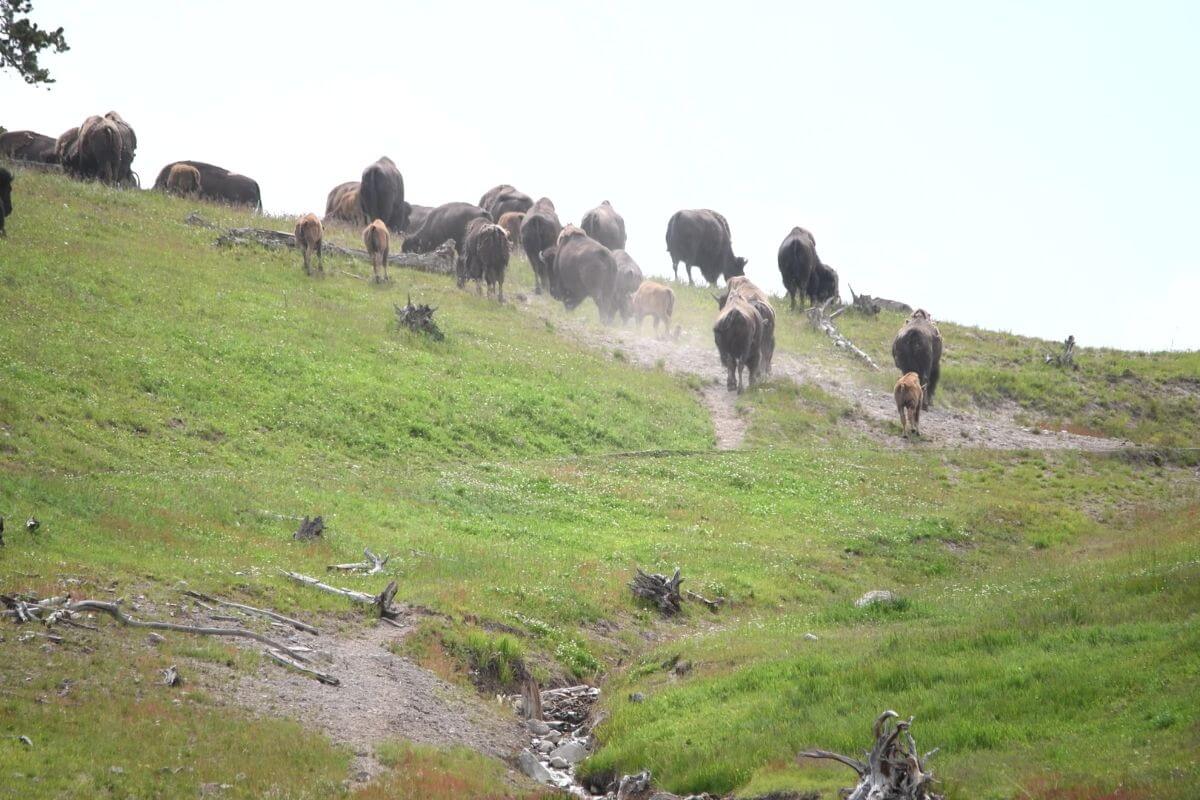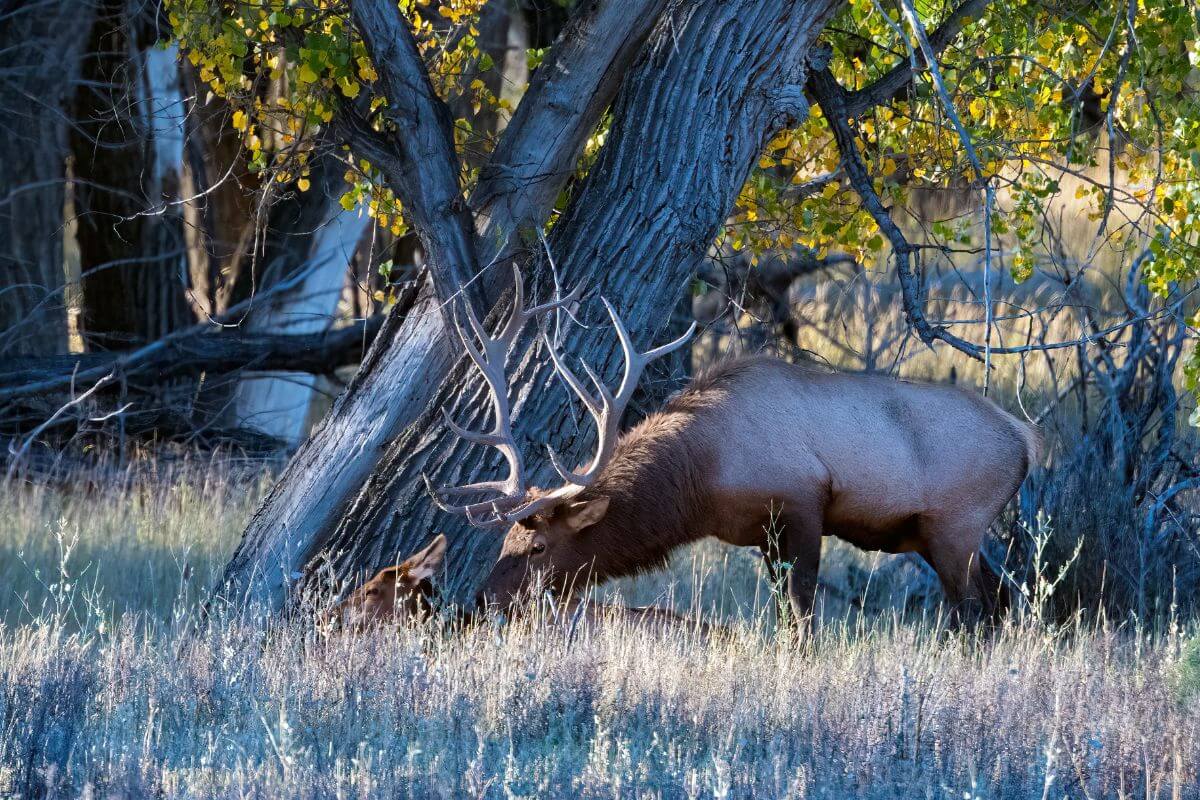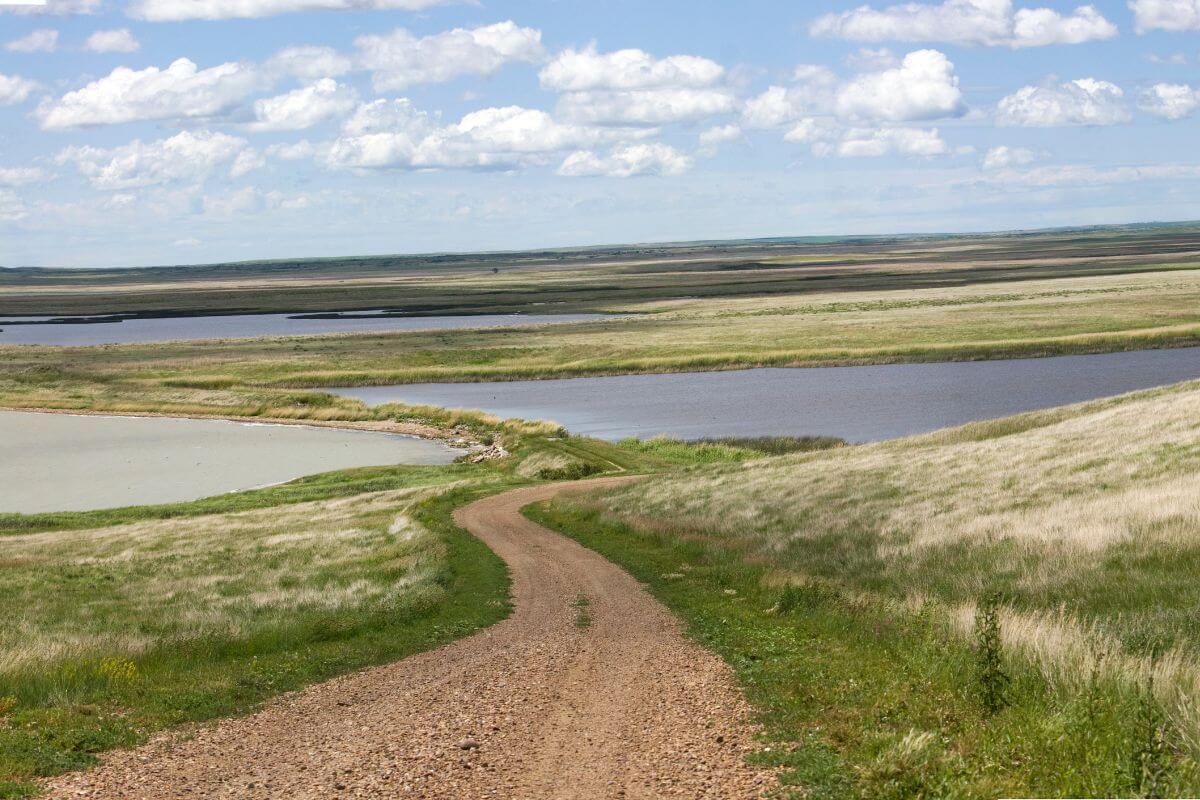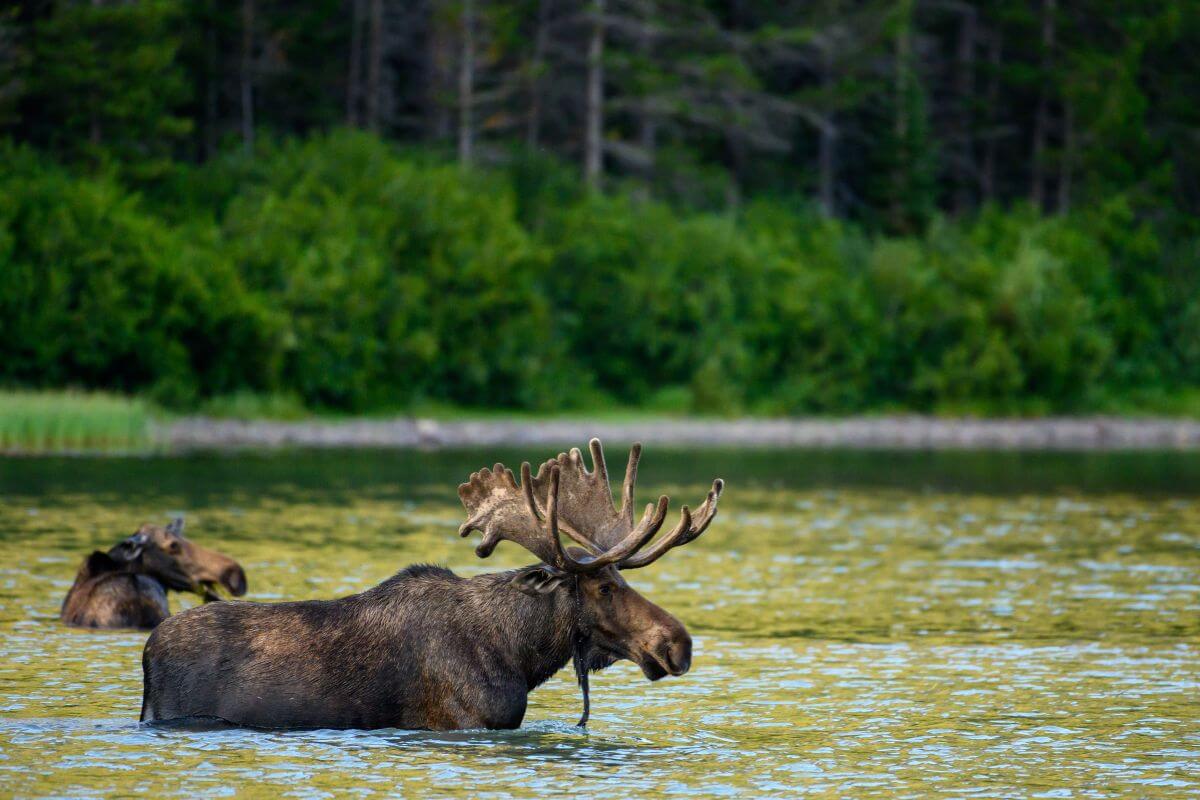Montana’s wildlife refuges are vast landscapes set aside to protect and preserve the natural world. The U.S. Fish and Wildlife Service manages them, and they play a crucial role in conservation. They also offer safe spaces for many plants and animals.
Today, we’ll take you through the top wildlife refuges in Montana, like the Charles M. Russell National Wildlife Refuge and the Medicine Lake National Wildlife Refuge. These sites offer protection for wildlife and opportunities for birdwatching and hiking.
- Related article: Experience Montana’s Wildlife
Have you ever wondered what it’s like to see a landscape teeming with life, like Lewis and Clark? Montana wildlife refuges let you do just that.
Montana’s refuges are a treasure trove of experiences waiting for you. They’re for avid nature photographers and for those who find peace outdoors. Let’s explore how you can enjoy and help preserve these incredible natural spaces.
6 Key Takeaways on Wildlife Refuges in Montana
- The National Wildlife Refuge System (NWRS) is a benchmark for conservation. It covers 570 refuges and 859 million acres across the U.S. and is dedicated to protecting natural habitats.
- Wildlife refuges in Montana, like the Charles M. Russell and Medicine Lake, offer vast and untouched landscapes. Visitors can do many activities and see diverse wildlife here.
- Montana has 22 wildlife refuges, ranging from open plains to mountains. They are spread throughout the state and provide safe homes for many plants and animals.
- Montana’s wildlife refuges contribute uniquely to the state’s biodiversity and natural heritage. They ensure wildlife continues thriving, including rare and protected species.
- The FWP manages Montana’s Wildlife Management Areas (WMAs), vital for wildlife conservation. WMAs offer protected spaces where animals can live undisturbed.
- Visitors to Montana’s WMAs and refuges can enjoy nature responsibly through hunting, fishing, or wildlife observation. Doing so contributes to the sustainability of these areas.
Role of Wildlife Refuges in Protecting Natural Habitats
The National Wildlife Refuge System (NWRS) is crucial to protecting natural habitats across the United States. Managed by the U.S. Fish and Wildlife Service, this vast network of public lands is dedicated to conservation.
The National Wildlife Refuge System (NWRS) is vital for the following reasons:
- Conservation Legacy – Established in 1903, the NWRS is a conservation beacon covering more than 570 refuges and 859 million acres. It’s a place where native species find a haven and where the natural world is free from development pressures.
- Dedicated Conservation – Each refuge is a dedicated space managed precisely to conserve and restore plants, animals, and their homes. It ensures that future generations enjoy a rich, diverse natural world.
- Prime Wildlife Watching – Wildlife watching in these refuges is top-notch. Their primary goal is to conserve native species, but these places are some of the best for seeing wildlife up close on the planet.
The NWRS isn’t just a big patch of nature left alone. It’s a place where people work hard to ensure everything is balanced. From managing water to keeping an eye on the wilderness, they use many tools designed to tackle challenges for animals and humans.
Partnerships are a big deal in the Refuge System. They go beyond just working with other organizations. They’re about getting the local community involved and ensuring everyone’s voice is heard. This community-driven approach ensures that conservation is not top-down but a joint effort that benefits wildlife and people.
Top Montana Wildlife Refuges

Montana boasts some of the most stunning wildlife refuges in the country. They offer nature lovers the perfect escape to observe and appreciate the state’s natural beauty.
These refuges are home to various wildlife species and provide a glimpse into untouched natural habitats. Let’s explore the top wildlife refuges in Montana that are a must-visit for anyone passionate about nature.
Charles M. Russell National Wildlife Refuge

Established in 1936 and spanning about 1.1 million acres, the Charles M. Russell National Wildlife Refuge is the second-largest refuge of its kind in the lower 48 states. Named after the renowned Montana artist in 1963, this refuge has a rich history and a commitment to preserving nature.
Aside from the sheer expanse of the refuge, you’ll also notice that all of the land is well-preserved. From native prairies to badlands, the landscapes here have changed very little since the days of Lewis and Clark. For visitors, that means a chance to see wild lands and wildlife, much as they encountered during the famous expedition.
Other key details about the Charles M. Russell National Wildlife Refuge:
- Diverse Landscapes – The Charles M. Russell National Wildlife Refuge has diverse landscapes. They include native prairies, forests in coulees, river bottoms, and badlands.
- Recreational Activities – The Charles M. Russell National Wildlife Refuge offers many recreational opportunities. These include hunting, fishing, camping, and hiking.
- Management for Diversity – The Charles M. Russell National Wildlife Refuge promotes biological diversity and maintains natural abundance.
- Science and Conservation – Conservation decisions for Charles M. Russell National Wildlife Refuge are based on research and monitoring.
Every decision made in Charles M. Russell National Wildlife Refuge, from managing plant and animal life to setting conservation goals, is backed by solid research and the latest scientific knowledge. This ensures that the refuge remains a thriving, natural habitat for years to come.
Medicine Lake National Wildlife Refuge

Medicine Lake National Wildlife Refuge is a haven for nature enthusiasts located in northeastern Montana’s vast, open plains. It’s a place where nature’s beauty and conservation’s importance come together.
Medicine Lake National Wildlife Refuge key information:
- Location and Size – Situated between the Missouri River and the Canadian border, Medicine Lake National Wildlife Refuge spans about 31,533 acres. The Medicine Lake Wilderness lies within this area, covering 11,366 acres and offering extra protection to the most secluded areas.
- A Haven for Birds and More – Established in 1935, Medicine Lake National Wildlife Refuge preserves essential wetlands and grasslands, making it a haven for 283 bird species and a paradise for birdwatchers and photographers.
- Recognized for its Natural Beauty – Designated a National Natural Landmark in 1980, Medicine Lake National Wildlife Refuge is not just a refuge. It’s a place of national significance for its untouched natural beauty.
- Activities for Nature Lovers – Medicine Lake National Wildlife Refuge isn’t just for looking, it’s for experiencing. Visitors can enjoy waterfowl, upland bird hunting, and ice fishing during the winter. The area is also home to specific grassland nesting species, highlighting the diversity of life the refuge supports.
Medicine Lake National Wildlife Refuge offers public roads and a 14-mile (22.5-km) auto tour route for those who want to get closer to nature. This route guides you through different habitats, giving you the chance to see the wildlife up close and capture stunning moments of wildlife through photography.
Other Montana Wildlife Refuges

Montana is a haven for wildlife, boasting 22 recognized wildlife refuges that are like safe homes for various animals and plants. These refuges are crucial for protecting our wildlife heritage and the natural environment. They cover many landscapes, from open plains to mountainous regions, and are scattered across the state.
Here are some key wildlife refuges in Montana:
| Location in Montana | Wildlife Refuges |
|---|---|
| Great Falls | Benton Lake National Wildlife Refuge |
| Malta | Black Coulee National Wildlife Refuge, Bowdoin National Wildlife Refuge, Creedman Coulee National Wildlife Refuge, Hewitt Lake National Wildlife Refuge, Lake Thibadeau National Wildlife Refuge |
| Moiese | Bison Range, Ninepipe National Wildlife Refuge, Pablo National Wildlife Refuge, Swan River National Wildlife Refuge |
| Lewistown | Grass Lake National Wildlife Refuge, Hailstone National Wildlife Refuge, Lake Mason National Wildlife Refuge, UL Bend National Wildlife Refuge, War Horse National Wildlife Refuge |
| Medicine Lake | Lamesteer National Wildlife Refuge |
| Stevensville | Lee Metcalf National Wildlife Refuge |
| Marion | Lost Trail National Wildlife Refuge |
| Lima | Red Rock Lakes National Wildlife Refuge |
| Corvallis | Teller Wildlife Refuge |
| 50 miles (80.47 km) South of Billings | Pryor Mountains Wild Horse Range |
Each refuge is vital in maintaining the natural balance and providing a safe space for wildlife to thrive. If you’re a nature lover, visiting these refuges offers a glimpse into Montana’s untouched beauty. It gives you a chance to see a wide range of animals in their natural habitats.
Wildlife Management Areas
Wildlife Management Areas (WMAs) in Montana are like safe havens for nature. Managed by Montana Fish, Wildlife & Parks (FWP), these areas prioritize wildlife and habitat. These are big, open homes where animals can live and thrive naturally.
Why are Wildlife Management Areas (WMAs) in Montana so important?
- Save Wildlife Habitats – Without WMAs, some areas where animals live would be taken over by other things like buildings or roads.
- Include Wildlife Habitat Protection Areas – They are like extra-special spots within WMAs set aside just for wildlife. These areas cover everything from tiny islands to small pieces of land, ensuring all kinds of animals have a place.
In Montana’s WMAs and Protection Areas, you’ll find a huge variety of animals, including:
| Category | Examples |
|---|---|
| Large Animals | Bears, Deer, Elk, Moose |
| Mountain Dwellers | Mountain Goats |
| Predators | Wolves, Birds of Prey |
| Elusive Creatures | Furbearers |
The FWP team has a big job looking after the animals and the 600+ species of birds, mammals, reptiles, and amphibians in Montana. Their tasks cover everything from ensuring animals have enough space to help people enjoy wildlife correctly through hunting, trapping, or watching.
Montana’s Wildlife Management Areas are crucial for wildlife conservation. They show how people and nature can work together to ensure the health and balance of our natural world.
Montana Wildlife Refuges Final Thoughts

Montana’s wildlife refuges are not just vast natural landscapes but the heart of conservation efforts, offering safe havens for a diverse array of plant and animal life.
The state’s commitment to preserving these areas is a testament to the value placed on nature. From the Charles M. Russell Refuge’s historic landscapes to Medicine Lake Refuge’s bird sanctuaries, Montana’s love for nature knows no bounds.
Visitors to Montana’s refuges get a rare opportunity to connect with untouched beauty, engaging in activities that range from hunting to peaceful wildlife observation. This balance of human interaction and conservation is key to ensuring these areas remain bountiful for future generations.
Montana’s refuges are not just about protecting wildlife but about maintaining the natural balance and providing spaces where animals and people can thrive. These conservation areas are invitations to explore, learn, and appreciate the beauty and importance of our natural world.
Montana Wildlife Refuges FAQs
1. What Is the Largest Wildlife Refuge in Montana?
The Charles M. Russell National Wildlife Refuge is Montana’s largest wildlife refuge, covering more than 1.1 million acres, making it one of the biggest in the country.
2. What Wildlife Does Montana Have?
Montana is home to various wildlife, including popular mammals such as grizzly bears, wolves, and elk, and various bird species like bald eagles and western meadowlarks.
The state’s fish species, such as trout, can be found in its rivers and lakes, while animals, such as mountain lions and bighorn sheep, inhabit its forests and grasslands.
3. What Part of Montana Has the Most Wildlife?
Montana’s national parks and wildlife refuges have abundant wildlife due to conservation efforts and extensive habitats.
4. Does Montana Have the Most Wildlife?
Montana has a lot of wildlife, but it’s hard to say if it has the most. Other states with diverse habitats and protected areas may also have significant wildlife populations.
5. What Animal Is Montana Known For?
Montana is famous for its wildlife, including the grizzly bear, symbolizing the state’s rugged wilderness. Outdoor and wildlife enthusiasts flock to Montana to see elk, bison, wolves, and bald eagles.
Experience Montana’s wonders through our interesting reads below:
- Facts About Montana Squirrels
- Winter Animals in Montana
- Montana’s Winter Birds
- Wolves in Montana
- Discover Montana’s Alpacas
- American Prairie Reserve Guide
- Discover Benton Lake Wildlife Sanctuary
- https://www.fws.gov/program/national-wildlife-refuge-system
- https://www.fws.gov/refuge/charles-m-russell
- https://www.fws.gov/refuge/medicine-lake
- https://fwp.mt.gov/conservation/wildlife-management-areas
- https://fwp.mt.gov/conservation/wildlife-management
- https://www.flickr.com/photos/usfwsmtnprairie/7498527570

